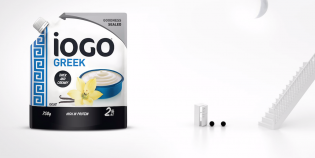
Few things speak more succinctly to the notion of Canadian identity than the fact that the country has its own sub-genre of apology.
The “Canadian sorry” is a distinct breed of contrition, offered as much out of refl ex as genuine guilt; as likely to be uttered by a Canadian who’s had his or her foot stepped on as by the one who did the stepping.
It could easily be mistaken for passive-aggression were it not for Canadians’ reputation for being so damn nice.
Until recently, Canada’s public broadcaster operated under principles similar to those that underpin the “Canadian sorry.” The CBC’s programming was steeped in documentaries, and even its prime-time fi ction properties eschewed glitz and glamour in favour of modesty and restraint. The excuse-me culture of the CBC extended to the promotion of its content–the broadcaster didn’t shout about its shows, preferring to whisper in a manner that suggested it was sorry to have bothered its viewers. And when it came to creative advertising solutions, the CBC’s refrain was often, “Sorry, we can’t do that.”
But much has changed in the last few years. A leadership team of CBC English services general manager Kirstine Stewart , executive vice-president of English services Richard Stursberg and Scott Moore, who added head of marketing and media sales to his existing title as executive director of sports earlier this year, have been implementing a different kind of programming and business strategy . It’s a strategy based in large part on replacing bashfulness with pride, and in 2009–despite the immense challenges of the evolving media universe and a devastating recession–CBC proved that it was arguably more relevant than it’s ever been to Canadians, so much so that the CBC earned the title of Marketing’s Media Player of the Year.
“In the past, I think we were typically Canadian in that we apologized for our programming,” says Moore. “You look at what we do and it’s world-class, so we don’t have to apologize for it.”
It’s certainly the case that better programming has driven the CBC’s transformation from ratings also-ran to a destination of choice for both audiences and advertisers. The reality show Battle of the Blades regularly drew more than 1.5 million viewers through the fall.
CBC is committed to a second season for 2010 and Moore says other countries have already come calling about the possibility of buying the format, an original Canadian creation. The entrepreneurial challenge show Dragon’s Den and the news satire The Rick Mercer Report, along with the stalwart Hockey Night in Canada, also reliably attract more than a million pairs of eyeballs to each episode, with dramas Being Erica and Heartland and the sitcom Little Mosque on the Prairie securing smaller but equally loyal fan bases.
“In terms of programming we have been fl ying high,” says Stewart.
“I think this is a true cause for celebration.” And it’s not just numbers of people, but the ages of those people tuning in that have changed. “We were largely a 55-plus audience. We have been able to get more audience 35 to 55,” she says.
Shows like Heartland and Dragon’s Den have become popular with families and younger people–an attractive target for buyers, says Stewart . “We have proven that we can pull down the audience average in terms of age.”
According to Stursberg, the programming hits are the product of a radical shift in CBC’s thinking that occurred roughly four years ago. Specifi cally, the organization decided that, rather than place its faith in “event” television such as mini-series and documentary specials, it would be more productive to take the hint from the majority of Canadians who ignored such programming and tuned in to U.S. shows in droves.
“That meant a more series-based approach, and it also meant working within genre conventions like situation comedies or procedurals– obviously with the idea of being uniquely Canadian,” says Stursberg.
One convention in particular that the CBC had previously resisted was reality television, a stance that Stursberg found baffl ing.
“I didn’t understand why that would be, because I thought reality TV was one of the most interesting and attractive innovations in television over the last 10 years.”
Bringing the CBC into the new television reality, a “factual entertainment” division was established at the corporation, a unit that developed Dragon’s Den, The Hour and this year’s breakout hit, Battle of the Blades. This successful shift in programming strategy has been accompanied by a similar adjustment in the way the CBC deals with advertisers and their media agencies.
Buyers such as Amanda Ploughman, president and CEO at Mediacom, note that the CBC has replaced its historically rigid devotion to church-state separation with a more creative and collaborative mindset, one that has resulted in, among other things, innovative brand integrations . Mediacom, for example, worked with the CBC at the script development level to insert TD Canada Trust into episodes of Little Mosque on the Prairie, Being Erica and Heartland for the 2009-10 season, and has also presided over multifaceted programs connecting Diageo’s Crown Royal and Guinness brands to Hockey Night in Canada and The Hour, respectively.
“They’ve pushed the envelope in terms of integration,” says Ploughman. “And I think the programming’s improved, quite frankly, so people want to work with them more.”

Like Ploughman, D’Arcy McDonald, associate vice-president, global brand marketing for TD Canada Trust, counts himself among the CBC’s growing fan base in the advertising community.
He says the opportunity to integrate into scripted shows was too good to pass up, even though such marketing moves don’t yet come with a how-to manual.
“It’s interesting from a marketing perspective because when you buy broadcast, you know what a Gross Rating Point costs and you know what you’re going to get,” says McDonald. “We entered into this with a lot of trust and faith in each other, because they couldn’t say at the outset that they were going to give us this number of minutes on this show on this night.
“But we’re pleased that they delivered as much value as we feel they did.”
McDonald adds that the CBC writers and producers charged with making the TD brand part of the scripts managed to do so without compromising the integrity and quality of the content–the characteristics that made the whole enterprise attractive in the first place.
“Because we signed on so early and the writers knew they just had to embrace the bank is some way, they were totally open to doing it in a way that felt natural to the characters,” says McDonald.
For his part, Stursberg says the CBC’s decision to become more flexible with respect to advertising was both natural and necessary.
“We’ve tried not only to be more agency-facing, but to find things we can do for [agencies’] clients to build higher levels of engagement,” he says, noting that CBC’s ownership of most of its programming makes it easier to offer advertisers opportunities such as TD and Diageo integrations–a competitive advantage over rival private networks that rely on U.S.-produced shows.
Moore says this increased flexibility is just one example of the concerted effort the CBC has made to compete for advertising dollars.
“We simplified our rate card, because there had been too many differences in the rate card–too much negotiating,” says Moore. “We want to be easier to deal with, and that’s really paid off.”
Marketers like Rudy Aldana confirm that this is indeed the case. Aldana, marketing director, whisky and tequila for Diageo–along with the company’s ad agency, Grey Canada–worked with the CBC to build a Hockey Night in Canada sponsorship program for this season that includes traditional broadcast advertising, online contests and an execution in the “3 Stars” post-game segment that shows the star graphics morphing into Crown Royal logos.
Aldana says the network’s attitude toward the project was as impressive as its final result. “They didn’t just come and say, here’s what we can do and here’s the cost,” Aldana says. “They brought their best people, their best talent to bring ideas forward.”
That talent includes the creative minds behind the shows, who often meet with buyers to discuss the opportunities–and limits–of integration. “They are quite prepared as a matter of course to bring producers in to meet with us,” says Hugh Dow, president of M2 Universal, which worked with CBC in recent years on Cadillac and Kraft integrations into Dragon’s Den and Hockey Night in Canada respectively. “They get their producers involved right from the start to get them to understand what the advertiser’s looking for, and for the advertiser to recognize that fine line between appropriate product integration and something the producer feels is stepping over the boundary.”
Along with the anecdotes, the numbers seem to back up Moore’s assertion that CBC has changed in ways that marketers believe in. The network charted a 22% uptick in advertising sales for September and a 9% improvement for October compared to the previous year. This in a Canadian television industry that, overall, suffered 7% and 8% decreases in those months.
Not that the CBC hasn’t been hit, and hit hard, by the recession. The organization cut 800 employees early this year and has been grappling with a budget deficit of more than $170 million–numbers that, in most years, would undermine any claims of success and certainly wouldn’t add up to a prescriptive formula for Media Player of the Year winners.
But this year hasn’t been like other years, and the CBC’s leaders, as well as observers in the media industry, believe it has steered through choppy economic waters as effectively as possible. Moore, Stursberg and Stewart all say the bleeding, at least the worst of it, has stopped, and that the CBC has actually emerged from the turmoil in a position of strength.
Veronica Engleberts, president and media director at Ottawa’s Vector Media, agrees. “Public and private broadcasters are all in the same environment, dealing with the same kinds of issues that their advertisers and customers are dealing with,” says Engleberts. “What strikes me [about the CBC] is that there is a renewed interest in exploring new ways to be relevant to their viewership.
“They’re much stronger now than they were a few years ago, and they’re becoming more competitive.” Engleberts points to the recent relaunch of CBC’s news products, including the rebranding of CBC Newsworld as CBC News Network, as an example of the organization’s commitment to growth and innovation in the face of daunting financial circumstances.
After two years of extensive consumer research, and despite having to cut staff, in October the network unveiled a snappier, more stylish and more social media-savvy approach to news presentation, one that pools resources from all of the CBC’s media properties.
“Where the old model was a broadcast model where we tell you what’s going on, the new model is more like a social media model, where we try to catalyze a conversation between ourselves and Canadians, and among Canadians, about what the news is, the nature and the meaning of the news,” Stursberg explains. “We pulled together all the news resources to provide an integrated news offer that has common editorial properties across all of the platforms.”
One of these platforms, CBC.ca, has been especially critical to the CBC’s move toward more twoway conversation. Stursberg says the network now receives approximately 300,000 online comments from visitors each month, powered primarily by its news site. On the entertainment side, the CBC recently introduced an online video player that gives consumers the option to download previously-aired episodes of its top shows, complementing its existing live-streaming of news and sports content.
“It’s a good experience for the customers and obviously there’s some revenue opportunities for us,” says Stursberg of the fact that consumers can now catch up on episodes of their favourite CBC shows online. “We get good CPMs on that, because obviously if you download a show, the buyer knows that you’re more engaged than if you were sitting passively at home watching it.”
Likewise, the marketing and media communities have come to notice that the CBC itself is no longer using a passive approach to its business. In the past year, the network has come out swinging with innovative ideas about how to give advertisers the most bang for their increasingly limited bucks.
And advertisers are listening, unable to ignore the CBC’s newfound penchant for programming that attracts mass audiences.
“It’s a real team effort,” says M2 Universal’s Dow. “When you look at the marketing, the sales side, the digital people, it’s an overall package that is obviously supported by some very strong programming that they’ve been able to successfully brand as CBC properties.”
It took years of strategic adjustment, some difficult staffing decisions and a willingness to learn from the U.S. television juggernaut, but Canada’s notoriously drab public media company has transformed itself to the point that, in 2009, it has become synonymous with hit programming and advertising innovation.
For that, the CBC makes no apologies.










